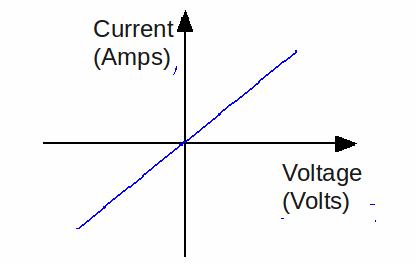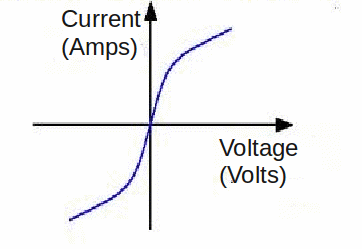Ohm's Law states that the voltage across a conductor is proportional to the current through it, with the constant of proportionality being the resistance. It may be stated as an equation V=IR where
V=voltage or potential difference
I=current
R=resistance
For the graph below, the gradient is the 1/resistance.

Ohm's law is valid for a conductor only over a limited range of temperature (or voltage and current). As the current increases, the conductor heats up. The atoms in the material vibrate around their mean position and impede the flow of electron, so the resistance to current increases. For a conductor, a graph of potential difference against current will depart from a straight line (and Ohm's Law) as shown below.

On the other hand insulators, semiconductors and diodes do not obey Ohm's law at all. These display decreasing resistance with increasing current/temperature. Electrons must be given energy before they will start to carry electricity. A graph of voltage against current is shown below.

